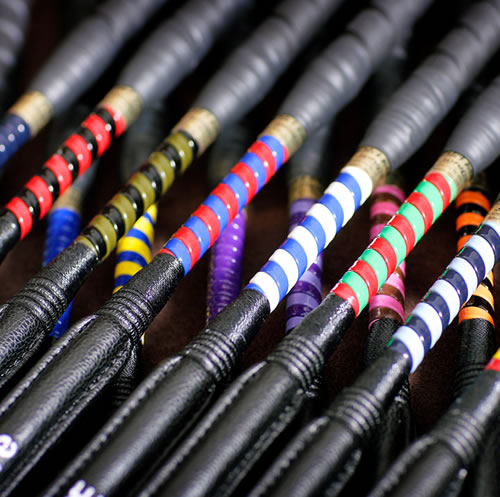A move to run the second race on Charity Mile day without ‘whips’ has been lauded in some quarters.

Frankie Dettori recieved a 9-day ban for his ride on Rewilding at Royal Ascot (Photo: Julian Herbert/Action Images)
But are we missing the core issues of semantics and education?
The operator funded website Tabnews reported earlier this week that Phumelela will be staging the second race at Turffontein on Saturday with jockeys not permitted to use whips.
The editorial goes on to suggest that horseracing is seen by many outsiders as a sport that encourages cruelty to animals. It says that the move to ban the use of whips in the sport is growing momentum in the UK and it has found a lot of support in South Africa.
At the outset, let’s note that the terminological references to the word ‘whip’ was outdated some ten years ago in South Africa. The National Horseracing Authority rule book – specifically 58.10 guidelines Appendix E – refers to the instrument as a ‘crop’.
It is a subject close to the heart of former jockey Tex Lerena, who was instrumental as the Chairman of the SA Jockeys Association in introducing the Pro-Cush ‘Whip’ – he prefers the label ‘crop’ or ‘persuader’ – about a decade ago to South Africa.

Tex with his jockey son Gavin
“They were introduced in England by Robert Patton from Old Mill Whips and made mandatory. It has a unique shock absorbing feature which protects the horse from injury or discomfort. Thanks to the support of Phumelela and the Racing Association, we immediately fell in line and introduced it within six months. Interestingly, since then we have seen a world trend of similar ‘crops’ becoming mandatory in most jurisdictions.”
Tex points out that other than being a huge improvement on what Jockeys were previously using, it was also the endorsement by the RSPCA, in that they were going to encourage it’s use in all other equestrian activities, that was a step for the better.
The veteran horseman is of the belief that it is the education of the layman – the general public – and the professionals, the jockeys, which needs attention to underline the reality that the crop is no weapon of war – it’s a part of the equipment required for race-riding.
 “The NHA rulebook references are clear but racing and other equestrian sports need to tweak the description of the ‘tool’ used by riders as a starting point. The whip is commonly known as an instrument with a handle and a flexible lash that is used for whipping. If we drop the traditional word that has been used for centuries and replace it by one of two words – ‘crop’ or ‘persuader’ – there is already a kinder association that the Pro-Cush and other similar makes deserve,” suggests Tex.
“The NHA rulebook references are clear but racing and other equestrian sports need to tweak the description of the ‘tool’ used by riders as a starting point. The whip is commonly known as an instrument with a handle and a flexible lash that is used for whipping. If we drop the traditional word that has been used for centuries and replace it by one of two words – ‘crop’ or ‘persuader’ – there is already a kinder association that the Pro-Cush and other similar makes deserve,” suggests Tex.
Tex then adds that the other words that should be removed from the rule book for describing the use or misuse of the ‘crop’ are the actions of whip, hit and strike etc, as they ultimately are all associated with some kind of pain or punishment. He suggests that ‘smack’ or ‘persuade’ could be used.
Modern whips are made from cushion and they do not hurt the horse if used correctly but it does make lot of noise as it makes contact. However, outsiders watching a race just see that horses get a solid beating from a jockey and that immediately gives the sport a bad image.
Tex feels that stakeholders should get together to formulate a policy on the use of the whip.
“The number one concern should be what is fair for the welfare of the horse. We need to continue to educate young riders and those that continue to fall foul of a fair set of rules and guidelines, and thirdly to work on the public perception by educating them through the media and video clips.”

Having ridden for many years, Tex is well qualified to suggest that it is just about humanly impossible in the rigours of a race to be expected to count an exact amount of times of smacks versus strides to stay within the legal parameters.
“Change is difficult for anyone let alone a Jockey perched six foot above the ground on a horse travelling at 30 to 40 mph and everything else that goes with the riding of a race in a field size of between two and thirty two runners. You are looking for a clear run, avoiding or not causing interference, and at times distracted by a fellow jockey shouting. This happens because jockeys are limited to the vision just behind and around them as they do not have ‘rear view mirrors’. We need to apply our minds and simplify the process,”adds Tex.

He is keen to put his time in to leading the education initiative and to co-ordinate the streamlining of the related processes.
Tex is passionate about the project.
“I’d even like to take it beyond our borders and while the UK have always been the global leaders, we could set the pace on this one. We need to consult all stakeholders and hopefully we can get a sponsor behind the movement.”
“It’s a matter of time before all races are run hands and heels and that the whip is used mainly for correction. So the rider would utilise it with both hands on the reins – and maybe at the most for a slap down the shoulder. I am the converted and believe I can convert most horseman on the issue.”
Click on the image below to read more









